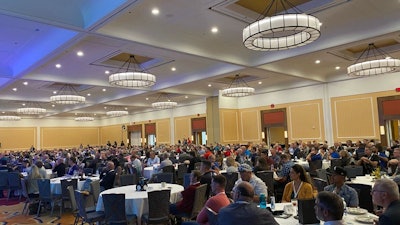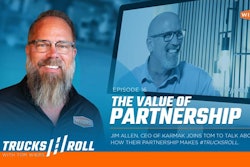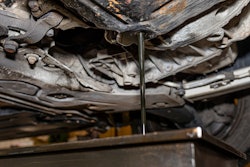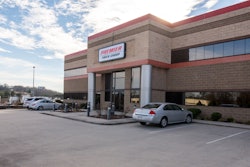
Business management systems won’t solve every problem a dealer operation has, but the installation process can provide some opportunities for improvement.
Picking a new system isn’t just selecting the cheapest out-of-the-box solution. It’s building a relationship and having a partner in the business. CDK Heavy Truck says it takes a consultative approach to installations.
“We partner with heavy truck dealers to find the best solutions for optimization,” says Marleen De Winter, product marketing lead. “Consider the functionality the vendor offers, including solutions that go beyond the DMS and can integrate with OEM software.”
 Procede users gather for the company's user conference in 2023.Procede
Procede users gather for the company's user conference in 2023.Procede
Process and processing
When David Wallace, Procede’s director of sales engineering, started in system implementation 15 years ago, he thought it was all data conversions and set-ups. But at the end of the day, he says, it’s about people and adapting to change.
As businesses — whether it is a first installation of a business management system or a migration of a business with an existing management system — embark on this process, installations require some soul-searching.
“Really look at your workflows and your processes,” suggests Kim Stoops, vice president of operations at Karmak. “Are you set up to succeed regardless of the business system?”
[RELATED: How dealers can maximize their dealer management systems]
Dealers switching from one business management system to another may want to stop and consider if they’re trying to solve the right problem. There may be other obstacles — untrained employees, bad data, inefficient processes — keeping their system from performing.
The required introspection may also be useful for businesses using the management system as a way to diversify and grow. Bennett Whitnell, vice president of sales at Procede, gives the example of an OEM dealer with a mature area of responsibility. A business management system could show them where margins can be improved and expansion achieved.
“My OEM business is only going to get as big as my OEM gets,” he says. “A lot of those dealers are starting to look for their competitive advantage and how their business system will support it.”
What migration looks like
Outside of the self-examination and business coaching, installation of the business management system looks much the same.
Karmak says its installation process has 18 stages and, in a perfect world, takes about 120 days. The company has strategic steps and benchmarks to be met along the way, and includes time for clearing up data, training and sandboxing with real-world information and scenarios.
Sandbox time is when the problems tend to rear their heads, Sharon Covitt, vice president of product success for Procede says, particularly with data integrity.
“Everyone understands the importance of data, but they’re really busy,” Covitt says. “They’re usually wearing a lot of hats. We can force data in, but that’s not the best way moving forward.”
Going live and afterward
Going live isn’t the end of the relationship with a business management system. In fact, it’s just the beginning. Pricing plans for systems include updates and companies are constantly adding new features and integrations for heavy-duty businesses to explore.
“We’re always continuing to research and develop innovative tools that increase dealer efficiencies,” De Winter says. “A great example of this is creating solutions that drive productivity in dealer workflows.”
Karmak says, based on customer feedback, it will soon roll out a capability to add credit card surcharges to customer bills. That and other updates are part of the monthly recurring fee the company charges for its software.
“Software is never done,” says Karmak’s Todd Robertson, vice president of sales. “We continue to listen to the customer and enhance the product. Updates are included. Support is also part of that.”
This article was updated Tuesday, May 28, 2024.









